The archaeology of London as a whole is extremely rich and the site of the Priory and St John’s Gate is no exception to this. The presence of the Order of St John at the site of St John’s Gate and The Priory of St John goes back to the twelfth century. Much of the original twelfth century site is unfortunately lost, although the Crypt still remains. The Gate in Clerkenwell was built in 1504 and the Church has been remodelled and rebuilt many times, most recently after being bombed in the Second World War.
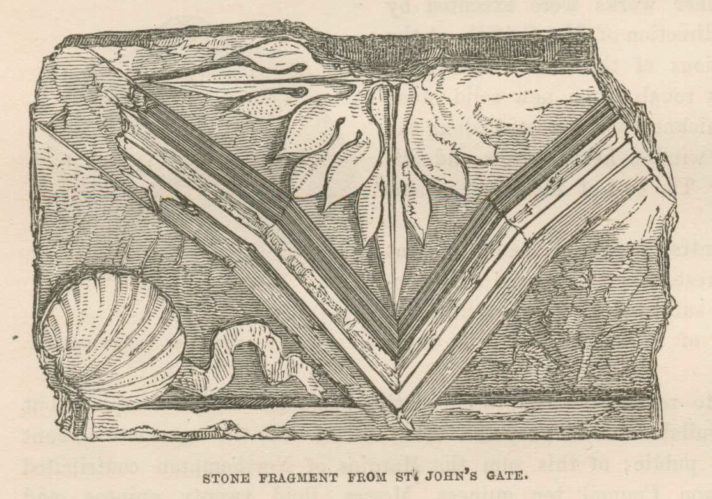
Although not all of the original site remains, we can use the archaeological and documentary evidence we have to help map out what the site at the Gate originally looked like, how it was used, who used it and how it has changed over time. Many of the archaeological objects we have in the Museum’s collection are from the Church and Crypt and mostly come from the excavations of the late nineteenth and twentieth century by HW Fincham.
The site of St John’s Gate and the Priory of St John is thought to have originally functioned as the administrative hub for the Priory of England, with farmland to the west of the Gate that helped produce food for the Priory community. The Priory was also much more expansive than what we see today with inner precinct buildings for dormitories, kitchens, and chambers.
Do we have any evidence for what was here before the Order?
The excavation report for the priory, produced by the Museum of London Archaeology, reveals evidence for the Corbets Tey Gravel Deposit was found. These natural deposits from the River Fleet date to c.300,000-120,000 BC and helps provide insight for past climactic and landscape reconstruction. These gravel deposits also provide important context for the preservation of the evidence for the Palaeolithic environment.
Was there any human occupation of the site before the priory?
The earliest evidence comes from the Roman period. Roman features and soil horizons suggest a settlement located close to the site, finds such as: quarry pits, pottery sherds, brick and tiles typical of first and second centuries AD have been found. Another site which predates the priory is an Anglo-Saxon site, with pottery sherds, a loom weight, oyster shell and herring bones found indicating a domestic settlement 450-550 AD. This site is of regional importance for Early Saxon occupation, being one of only a dozen or so found in Greater London.
How did the priory come to be built here?
It is important to picture that, in the 1100s, this area of Clerkenwell was the outskirts of London. The land here was given to the Order by a Norman knight, Jordan de Bricet in 1144, whose name was given to Briset Street around the corner from St John’s Gate.
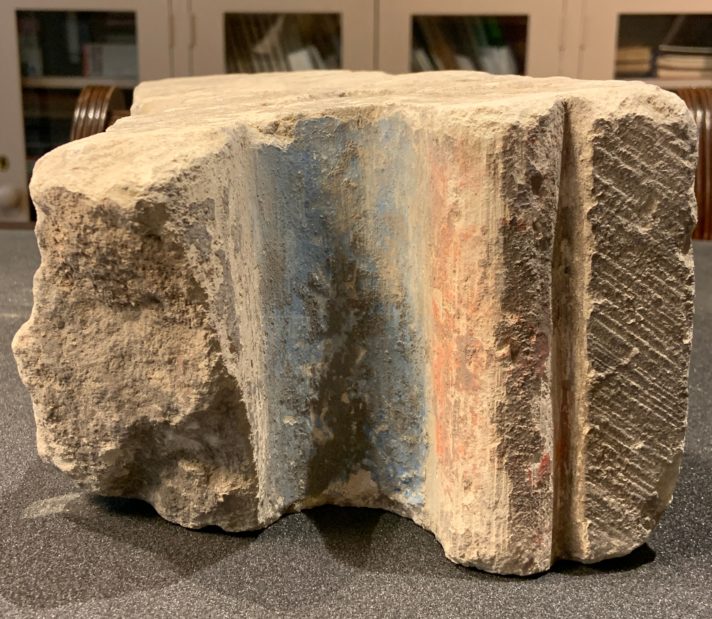
The site expanded by the late twelfth century into a complex including a church, dwellings, accommodation, storage, service buildings, infirmary hall, agricultural land beyond the walls, original church nave and crypt. Archaeological material implies the presence of craft industries here at the Priory, with evidence for horn working, leather tanning and bone working. There are also signs of a rich diet, with swan and veal bones indicating a somewhat luxurious lifestyle for the wealthy. Cattle and sheep were also used, not only for their meat, but their milk and wool too. Similarly, through the study of human and insect remains, we can map out the health of residents and their activities, with particular insects indicating the presence of stables at the priory.
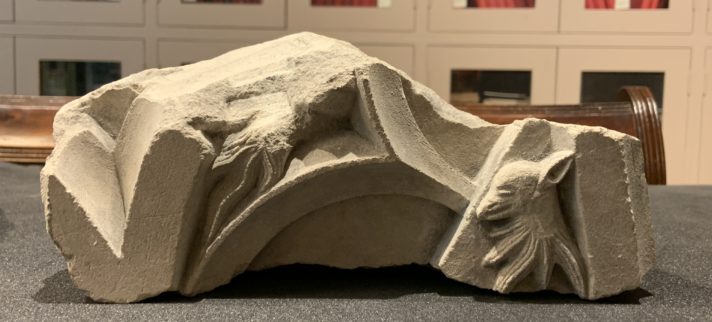
The strong continental influences in the architecture of the Church and the unique character of the Priory can be seen from the archaeological evidence. Architecturally, we have a large collection of stone from the original Church and Priory buildings. The Church was characterised by its rounded nave, one of only seventeen the British Isles thought to have this design and was likely to have been based on the design of the Holy Sepulchre in Jerusalem. It is believed to have been made from Caen stone, a Jurassic limestone originating from Caen, north-western France. The example of stone we have from the Church contain polychrome decoration and intricate carvings, these examples can help us begin to picture how the original Church looked, with painted decorative walls and elaborate carvings.
How did the Priory look?
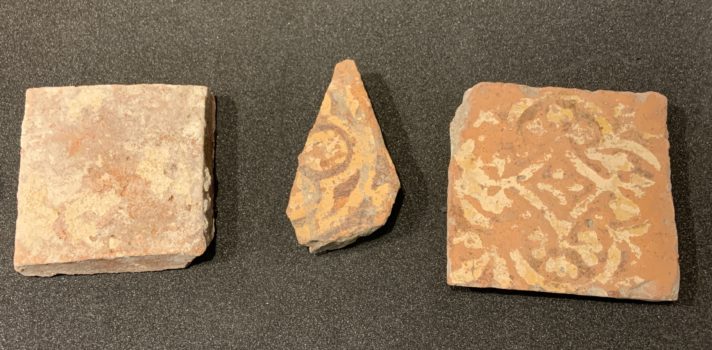
We have a large collection of Westminster floor tiles with around 60 found at the site within the priory. These comprise of at least 44 different designs, 22 which were previously unknown. The earliest of these tiles was associated with demolition contexts c.1280-1330 on the site of the rounded nave of the church.
There has been a high frequency of these tiles uncovered in the area, indicating a large-scale tile production. Many of these tiles are thought to have been used in the inner precinct buildings and re-used in the fourteenth and fifteenth centuries. A redevelopment of the Priory from the fourteenth century saw the construction of residences for officials of the Order and important servants. The site took a departure away from conventional monastic plans and took on an aristocratic architectural style with a large complex of halls and gardens, where these tiles are thought to have been re-used. The range of local and imported pottery found at the site of the Priory also ties in with the international picture of the site, where Hospitallers would gather at the Priory before setting out to the Holy Land.
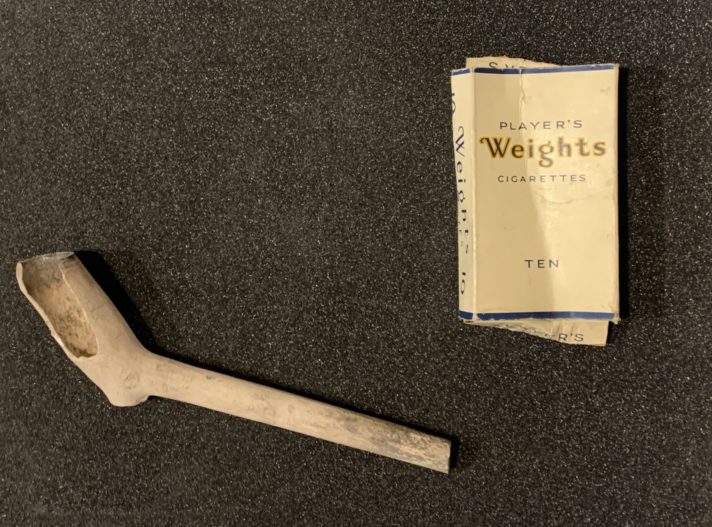
Although the archaeology of the Priory and the Gate mainly consists of architectural material, archaeology can also help provide insights into the personal lives of the people who occupied this historic building. For example, we have some whole and fragmented clay pipes and an empty box of Player’s Weights cigarettes which were found under the floorboards in one of our historic rooms.
The packaging matches that of the 1940s, but why were they found under the floor? Was it to do with rationing during the war? Were they left by builders working in the rooms? Or was it to hide a secret habit away from colleagues and peers? We also don’t know if the pipes are of the same date, were they all deposited together? Or was it a secret, growing collection hidden in the floorboards?
We may never know but this small insight into the personal habits and possessions of the people who worked here, even just 80 years ago, highlights the breadth of questions delving into this building’s past can uncover.
The high quality material remains and documentation of the gate and priory have helped cement it as a site of international importance. But, there is still so much more to explore, map out and discover!


